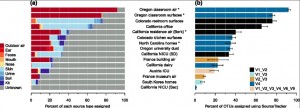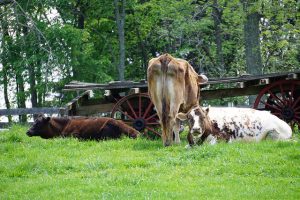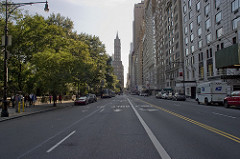A new paper from Adams et al does a meta-analysis of indoor microbiome data to further characterize the microbial interactions within the indoor built environment. They used sequence data from four studies that covered South Korean homes, Colorado restroom surfaces, Colorado kitchen surfaces, and North Carolina homes, and found that communities were most similar between the type …
New papers on microbes in water treatment plants and pipes. Microbes in pipes Revealing the microbial community structure of clogging materials in dewatering wells differing in physico-chemical parameters in an open-cast mining area – Juanjuan Wang – Water Research Iron rich deposits cause clogging the pumps and pipes of dewatering wells in open-cast mines, interfering …
Time for an update with recent papers on the microbes of the built environment. I have many, so I will break them up into two different posts. Microbes in buildings Microbial Density on Electronic Devices – Sulan Kith – Int.J.Curr.Microbiol.App.Sci Human participants each used an tablet, smart phone and media player for 20 minutes. We predicted that microbial density would …
It is well known that antibiotic resistance in bacteria happens much faster than we can possibly develop novel antibiotics. So what if instead of trying to reinvent the wheel, we just rearrange it? Well, researchers at the H. Lee Moffitt Cancer Center and Research Institute had a similar idea in regards to reducing antibiotic resistance …
I am running a journal club this quarter at UC Davis on Host Microbiome Co-evolution (see Journal Club at #UCDavis on Co-evolution of Microbiomes and Hosts for more information). It meets Mondays 12:10-1 PM. But I thought I would post here about the course and I would welcome any comments from anywhere, even if you cannot …
Crossposting this from my Tree of Life blog: I am going to be running a journal club this quarter at UC Davis for the Population Biology Graduate Group. The topic is Co-evoution of Microbiomes and Hosts. Meeting time is 12:10-1:00 PM if you want to participate let me know. A link to the Draft Outline …
Antibiotic resistance is a global problem, threatening both human and animal health. A recent study shows that antibiotic resistance has spread into wildlife populations in Chobe National Park, a spectacular park located along the Chobe River in Botswana. In this region, humans and wildlife live in close proximity and significant antimicrobial resistance occurs in human populations. In a study published in the …
A new paper just came out from Dunn et al about how urban stress effects microbial communities in Manhattan. Urban structures can provide barriers to species movement and create islands of life, both for macro- and microscopic creatures. Here, they sampled soil bacterial and fungal species, as well as ant communities, from small road medians and large …
(Author’s note, this article is a bit out of date but I just found this draft and am posting it because I think it’s still an interesting study) Trying to get outside my microbiology comfort zone and post some more about building science. A recent study finding that more fresh air in classrooms correlated with …
A recent study from Meadow et al at the University of Oregon looked at the individual microbiota that humans shed into their surrounding environment. They sequenced the airborne microbes that colonized a sterile chamber once each individual entered. They found that this left a microbially distinct and detectable signature, much like a fingerprint, after 1.5-4 hours. …



